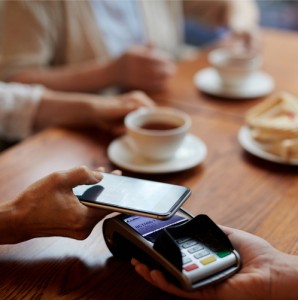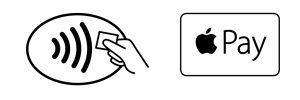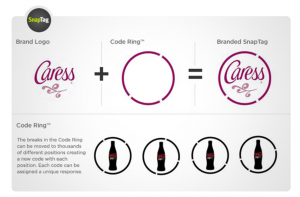BLOG/Digital Marketing
The Death of QR Codes and The Rise of New Technology
NFC tags
Near field communication (NFC) tags are one of the new tools that could potentially replace QR codes. Unlike QR codes, NFC tags do not require an extra application. The NFC chip technology already comes built into the majority of modern smartphones, which is a huge advantage. If a smartphone has NFC enabled, all someone has to do is touch or tap their smartphone against the NFC tag for the desired action to take place. This makes it a lot more convenient to use than QR technology.Advantages of NFC
NFC tags are a lot more secure, flexible, and easier to configure than QR codes. Because of it's more sophisticated encryption technology, we see NFC being used most often for mobile payments. Google Wallet and Apple Pay use NFC for transactions at stores because it's reliable and safe. It's also a lot easier to make changes and edit existing NFC tags versus changing and editing QR codes. To make changes to QR codes, one needs to create an entirely different code. In contrast, NFC tags can be edited easily, all one needs to do is go in and overwrite the old information. This makes NFC a lot more flexible since it can store different types of information and can be altered instantly.
Obstacles for NFC
Since NFC tags are newer than QR codes, it may still take a little while for people to understand exactly what it does and how it works. It will take some time before the NFC symbol is as recognizable as the QR image but, because of the mobile payment feature, it's definitely gaining more attention. [caption id="attachment_9441" align="aligncenter" width="300"] Image via qualstarcu.com[/caption]
Another major hurdle for NFC is the fact that iPhones only support NFC's mobile payment function. As of right now, iPhones, unlike the majority of Android smartphones, only support NFC because of its Apple Pay feature and does not support general NFC tagging functions. According to Statistica, in 2015, 43.5% of Americans who used a smartphone used an iPhone. Because so many people own iPhones, it has stifled the wider adoption of NFC tags at the moment. This is likely to be a non-issue in the future once the other NFC features are supported by newer smartphones.
Image via qualstarcu.com[/caption]
Another major hurdle for NFC is the fact that iPhones only support NFC's mobile payment function. As of right now, iPhones, unlike the majority of Android smartphones, only support NFC because of its Apple Pay feature and does not support general NFC tagging functions. According to Statistica, in 2015, 43.5% of Americans who used a smartphone used an iPhone. Because so many people own iPhones, it has stifled the wider adoption of NFC tags at the moment. This is likely to be a non-issue in the future once the other NFC features are supported by newer smartphones.
SnapTag
Another potential competitor to QR codes are SnapTags. One of the most common complaints about QR codes is that they are ugly. And although it may seem arbitrary, design and aesthetic are playing a bigger role in technology than ever. Consumers are attracted to colors and interesting designs, which is where QR codes fall short. The black and white square often looks out of place and tends to clash with the design of the rest of the packaging or advertisement it's on. SnapTag helps with this issue. [caption id="attachment_9442" align="aligncenter" width="300"] Image via inspiredm.com[/caption]
Image via inspiredm.com[/caption]
Advantages of SnapTags
SnapTag is similar to QR codes in that they are scannable images that access additional information marketers want consumers to know about. But unlike QR codes, they are more aesthetically pleasing and don't require an extra application. SnapTags allow marketers to use any image they want (usually a company logo) and then surrounds it with a "Code Ring". This Code Ring can be moved to thousands of different positions, creating thousands of individual codes, allowing marketers to store all the information they want on each unique code. By using SnapTags, one can seamlessly integrate a scannable code within the design of the overall product it's being placed on, making SnapTags more subtle and less distracting than QR codes. [caption id="attachment_9443" align="aligncenter" width="300"] Image via spyderlynk.com[/caption]
Another positive aspect of SnapTags is that one doesn't need to install an application. Although there is an application one can download in order to scan and save SnapTags (which allows customers to access content later), it's not required. Consumers do not need to download an extra app if they don't want to. One can just snap a photo of the code ring image and send it as a text message to gain access to the information on the code.
Image via spyderlynk.com[/caption]
Another positive aspect of SnapTags is that one doesn't need to install an application. Although there is an application one can download in order to scan and save SnapTags (which allows customers to access content later), it's not required. Consumers do not need to download an extra app if they don't want to. One can just snap a photo of the code ring image and send it as a text message to gain access to the information on the code.
Obstacles for SnapTags
As with NFC, SnapTags are not as widely known or used as QR codes. But because they have a better design, are more subtle, easier to scan, and have a multitude of tracking features that are useful to marketers they are a potential competitor to QR codes.QR vs. NFC vs. SnapTag… why use them at all?
QR codes are still around and are probably going to be around for at least a little while longer. However, new technologies like NFC and SnapTag are constantly improving on the things where QR codes fall short. NFC and SnapTag are only a small sample of technologies that bridge the gap between the physical and virtual world. These tools offer great potential for marketers because it enables them to engage with consumers in a more unique way. If you are looking for new, creative ways to engage with your customers, feel free to reach out to us anytime! We would love to help you out with any future marketing campaigns, just say “Hello” and we’d be happy to answer any other questions you may have.More from the
DO Blog

Designing & Building Product Finder Quizzes for eCommer...
Strategy & Planning / December 23, 2020
View Blog Post
3 Customer Motivation Strategies to Improve Your eCommerce i...
Strategy & Planning / July 27, 2020
View Blog Post
